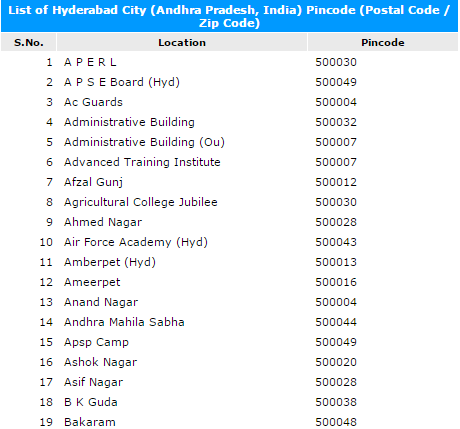


India has recently launched a new postal code system called the PIN or Postal Index Number, replacing the previous code system used by India Post. This new system is a six-digit code that reflects the city and district names, making it easier and more efficient for quick delivery of postal services. The first three digits represent the sorting district, followed by the route code and finally, the delivery office code. This new system will greatly benefit the postal services in India, ensuring faster and more accurate delivery.
Postal Code System in India: The PIN Revolution
Background
India's postal system is one of the oldest and largest in the world, with a network spanning over 155,000 post offices. However, the previous postal code system, introduced in the 1960s, had become outdated and inefficient. It was a complex and often confusing system that relied heavily on manual sorting and routing.
To address these challenges, India launched a new postal code system in 2013 called the PIN (Postal Index Number) code. This new system is a six-digit code designed to improve the accuracy and efficiency of postal delivery.
The New PIN Code System
The PIN code system is based on the concept of geographical encoding. The first three digits of the code represent the sorting district, the fourth digit indicates the route code, and the last two digits represent the delivery office code.
The sorting districts are designed to reflect the administrative divisions of India, such as states, districts, and sub-districts. The route codes indicate the specific route taken by postal vehicles within a sorting district. Finally, the delivery office codes identify the specific post office where the mail is delivered.
Benefits of the PIN Code System
The new PIN code system offers several benefits over the previous system:
Frequently Asked Questions (FAQs)
1. What is a PIN code? A PIN code (Postal Index Number) is a six-digit code that indicates the specific post office where mail is delivered.
2. How does the PIN code system work? The first three digits of the PIN code represent the sorting district, the fourth digit indicates the route code, and the last two digits represent the delivery office code.
3. What are the benefits of the PIN code system? The PIN code system improves accuracy, speeds up delivery, eases communication, enhances efficiency, and improves logistics management.
4. What is the difference between the old postal code system and the new PIN code system? The new PIN code system is a six-digit code that is based on geographical encoding, while the old system was a complex and confusing system that relied heavily on manual sorting and routing.
5. When was the PIN code system implemented in India? The PIN code system was implemented in India in 2013, replacing the previous postal code system.

Piyush Pandey, one of the most influential minds in Indian advertising, passed away on Thursday at the age of 70. Renowned for his iconic moustache and love for everyday stories, Pandey reshaped the industry by incorporating Hindi and Indian expressions, bringing humor, heart, and authenticity to mainstream brand communication. Indian Prime Minister Narendra Modi and Finance Minister Nirmala Sitharaman expressed their grief over the loss of Pandey, who was credited with revolutionizing Indian advertising and communication. His work will continue to inspire generations to come.

A private bus carrying 41 passengers caught fire after colliding with a motorcycle on National Highway 44 in Kurnool district, Andhra Pradesh. Preliminary police investigations suggest that the motorcycle's fuel tank ruptured and leaked fuel, causing the fire. The bus was reported to have multiple challans for traffic violations, and investigations are ongoing to determine the exact cause of the accident.

The Madhya Pradesh Police has launched a new campaign called 'Nashe Se Doori Hai Zaroori' to create awareness among the youth about the dangers of drugs and addiction. The campaign, which is being led by Indian Navy Chief Admiral Dinesh Kumar Tripathi, aims to highlight the importance of keeping the young generation drug-free in order to safeguard the country's future. Tripathi has urged everyone to understand their responsibility in creating a better India and to stay away from the path of destruction that substance abuse can lead to.

Studies have shown that surrounding yourself with greenery has significant benefits for mental health, including lower stress levels and improved mood. Engaging with indoor plants has been linked to reduced blood pressure and improved relaxation. A 2023 study also revealed that caring for indoor plants can increase mental well-being and emotional balance. Discover the top 12 indoor plants that can improve your health, happiness, and indoor air quality.

Devotees from all over India flocked to Vishram Ghat in Mathura to participate in the annual Bhai Dooj festival, a celebration of the special bond between brothers and sisters. The ancient Yamraj Temple was the center of the festivities as devotees took a dip in the holy Yamuna River and performed rituals to honor Yamraj and Goddess Yamuna. The festival is believed to bring blessings of long life, happiness, and prosperity to siblings and is a symbol of love and protection in Hindu mythology.

On the auspicious occasion of Bhai Dooj, Prime Minister Narendra Modi, Union Home Minister Amit Shah, and Union Health Minister JP Nadda extended their heartfelt wishes to the nation, celebrating the sacred bond between brothers and sisters. This festival, also known as Bhaiya Dooj, Bhai Tika, or Bhau Beej, is widely celebrated across India with love and festivity, symbolizing the unbreakable affection and dedication between siblings. The day holds great significance in Hindu mythology and is associated with the liberation of all living beings from suffering and the bestowal of happiness.

On Wednesday, April 30, Hindus will celebrate the auspicious festival of Akshay Tritiya, also known as Akha Teej. This day is believed to bring luck and success, and is considered free from all malefic effects. People often buy gold on this day as it is believed to bring prosperity and wealth in the future. Akshay Tritiya is also considered to be ruled by Lord Vishnu, who is a revered deity in Hinduism. The best time to buy gold on this day is between 06:11 AM and 02:12 PM, according to Drik Panchang.

As Diwali comes to a close, the festival of Bhai Dooj celebrates the unconditional love and bond between brothers and sisters with various names across India. This year, Bhai Dooj falls on October 23, with the tilak ceremony auspicious time from 1:14 PM to 3:29 PM. It is a time to cherish the cherished memories and create stronger relationships between siblings. Share heartfelt wishes and blessings on this day to celebrate the beautiful bond of love and togetherness.

Marking a historic moment, President Droupadi Murmu offered prayers at the Sabarimala Temple in Kerala, becoming the first serving state head to do so. She climbed the 18 sacred steps to reach the shrine and offered darshan to Lord Ayyappa, carrying the sacred bundle on her head. This visit holds symbolic significance as the president represents both Vaishnavism and Shaivism, making it a moment of unity in Hinduism.

As Diwali celebrations come to an end, the day after is marked by the auspicious festival of Govardhan Puja or Annakut. In 2025, this festival falls on Wednesday, 22 October, and is a reminder to express gratitude towards nature and the environment. Devotees prepare special offerings and decorate their homes with flowers and diyas, honoring Lord Krishna and the bounty of nature. While the article provides general guidance, it also urges readers to consult experts before implementing any beliefs or practices discussed.